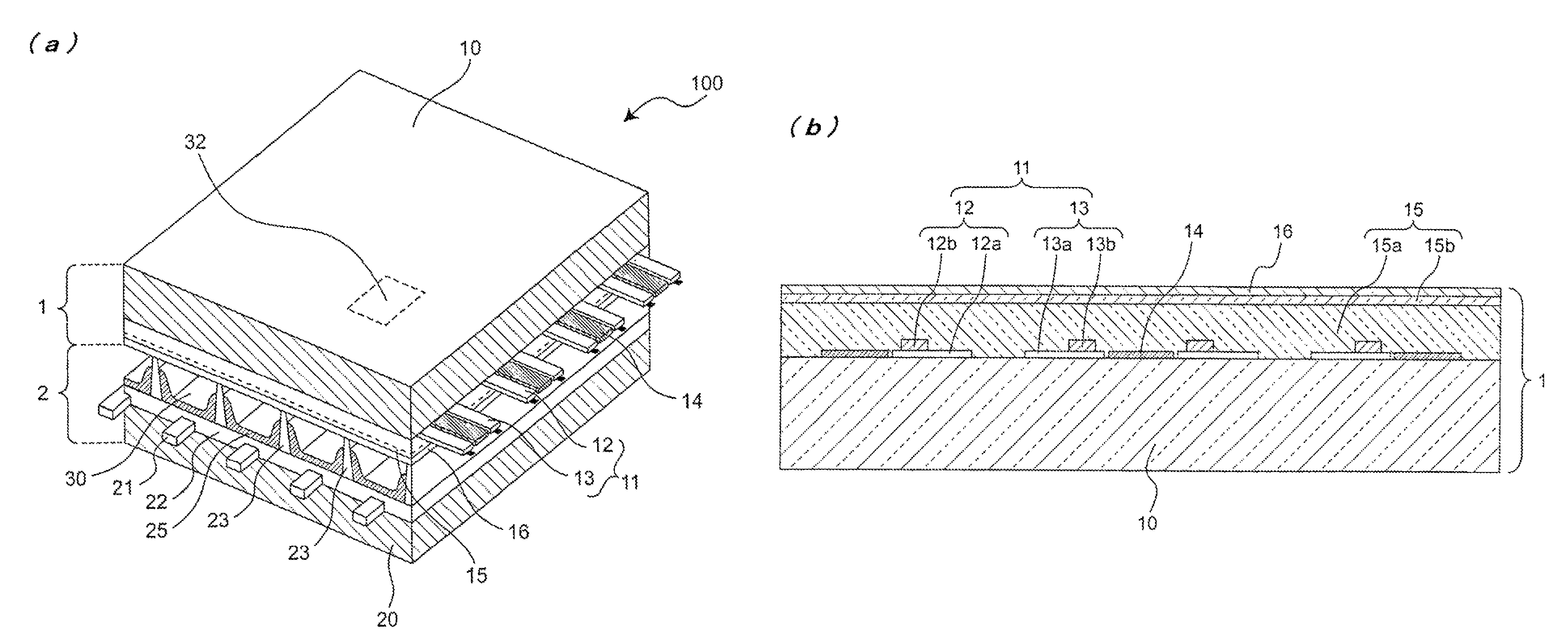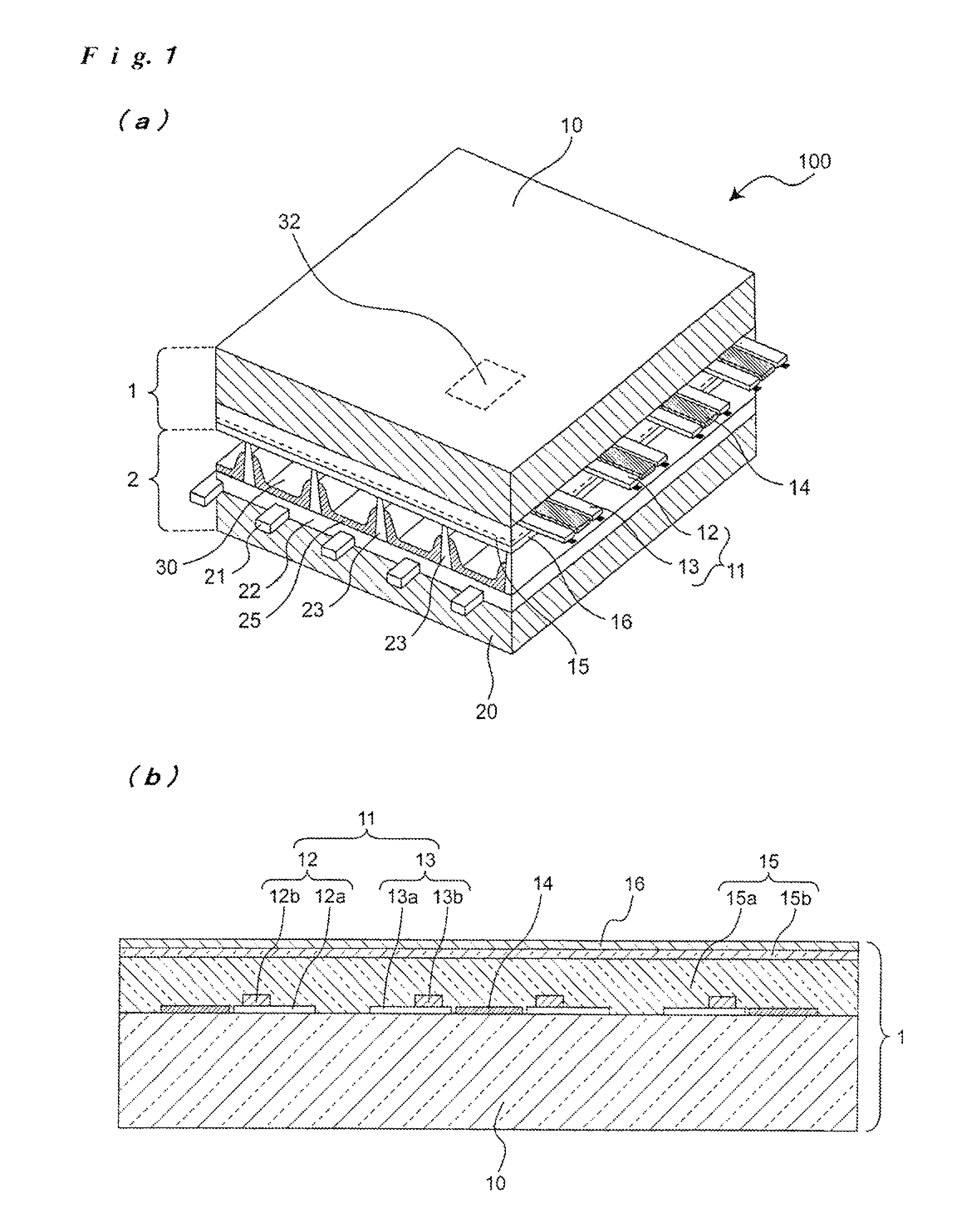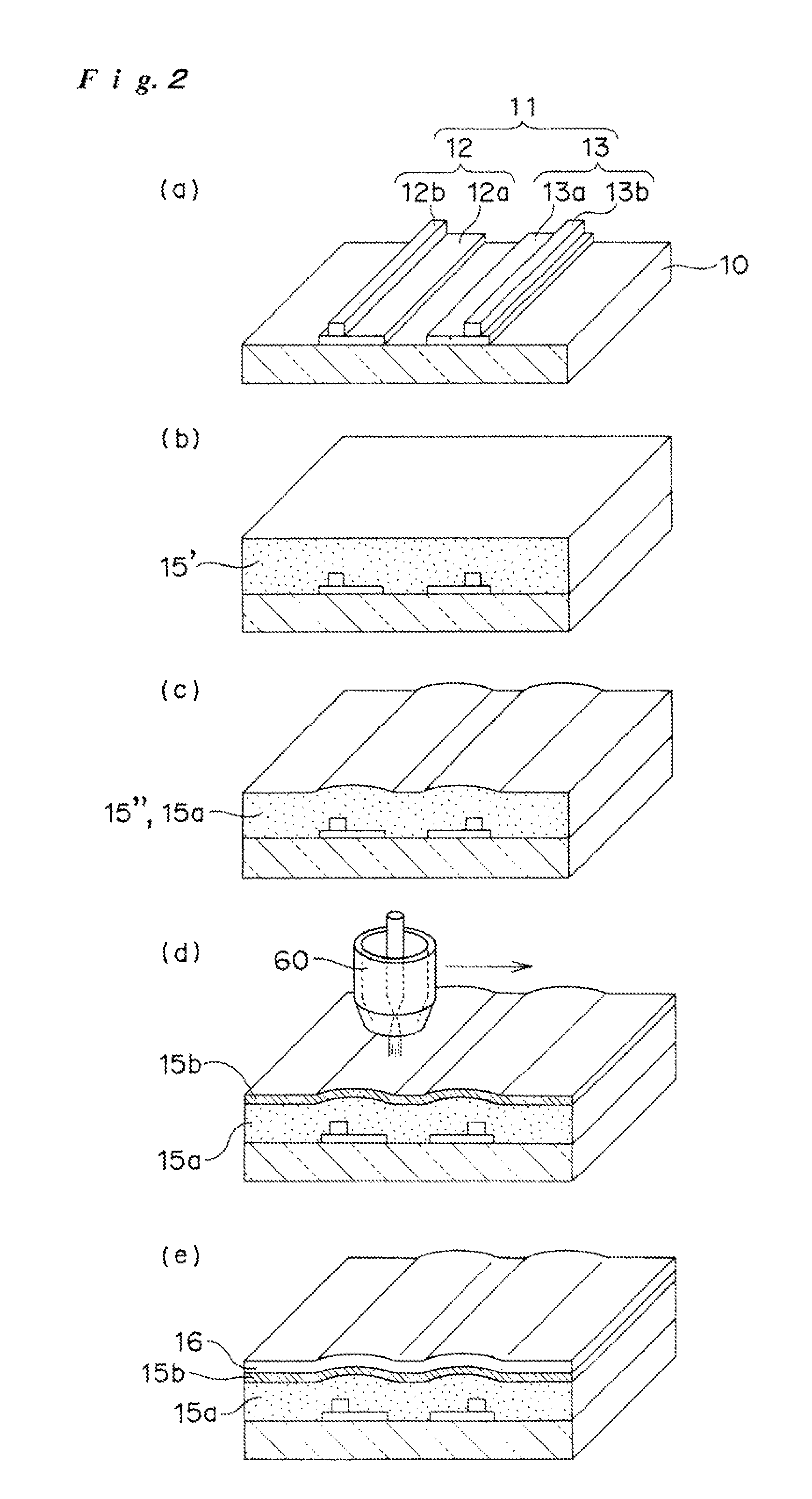Plasma display panel and method for producing the same
- Summary
- Abstract
- Description
- Claims
- Application Information
AI Technical Summary
Benefits of technology
Problems solved by technology
Method used
Image
Examples
examples
[0090]Examples of the present invention will now be described below. In the Examples, the second dielectric layer will be referred to as “cap layer” for the sake of convenience.
(Dielectric Material Paste)
[0091]Glass component (about 20% by weight with respect to entire dielectric material paste):[0092]polyalkylsiloxane oligomer, spherical amorphous silica particles (particle size: about 100 nm)[0093]Organic solvent component (about 79% by weight with respect to entire dielectric material paste):[0094]2-ethylhexanol, ethylene glycol monobutyl ether, α-terpineol[0095]Binder resin component (about 1% by weight with respect of entire dielectric material paste):[0096]Polyethylene glycol
(Production of Front Panel)
[0097]First, a transparent electrode made of ITO (about 120 μm in width and about 100 nm in thickness of the transparent electrode) was formed on a surface of 1.8 mm thick glass substrate (i.e. soda-lime glass manufactured by Nippon Electric Glass Co., Ltd.) and subsequently a bu...
PUM
 Login to View More
Login to View More Abstract
Description
Claims
Application Information
 Login to View More
Login to View More - R&D
- Intellectual Property
- Life Sciences
- Materials
- Tech Scout
- Unparalleled Data Quality
- Higher Quality Content
- 60% Fewer Hallucinations
Browse by: Latest US Patents, China's latest patents, Technical Efficacy Thesaurus, Application Domain, Technology Topic, Popular Technical Reports.
© 2025 PatSnap. All rights reserved.Legal|Privacy policy|Modern Slavery Act Transparency Statement|Sitemap|About US| Contact US: help@patsnap.com



